IMPACT REPORT
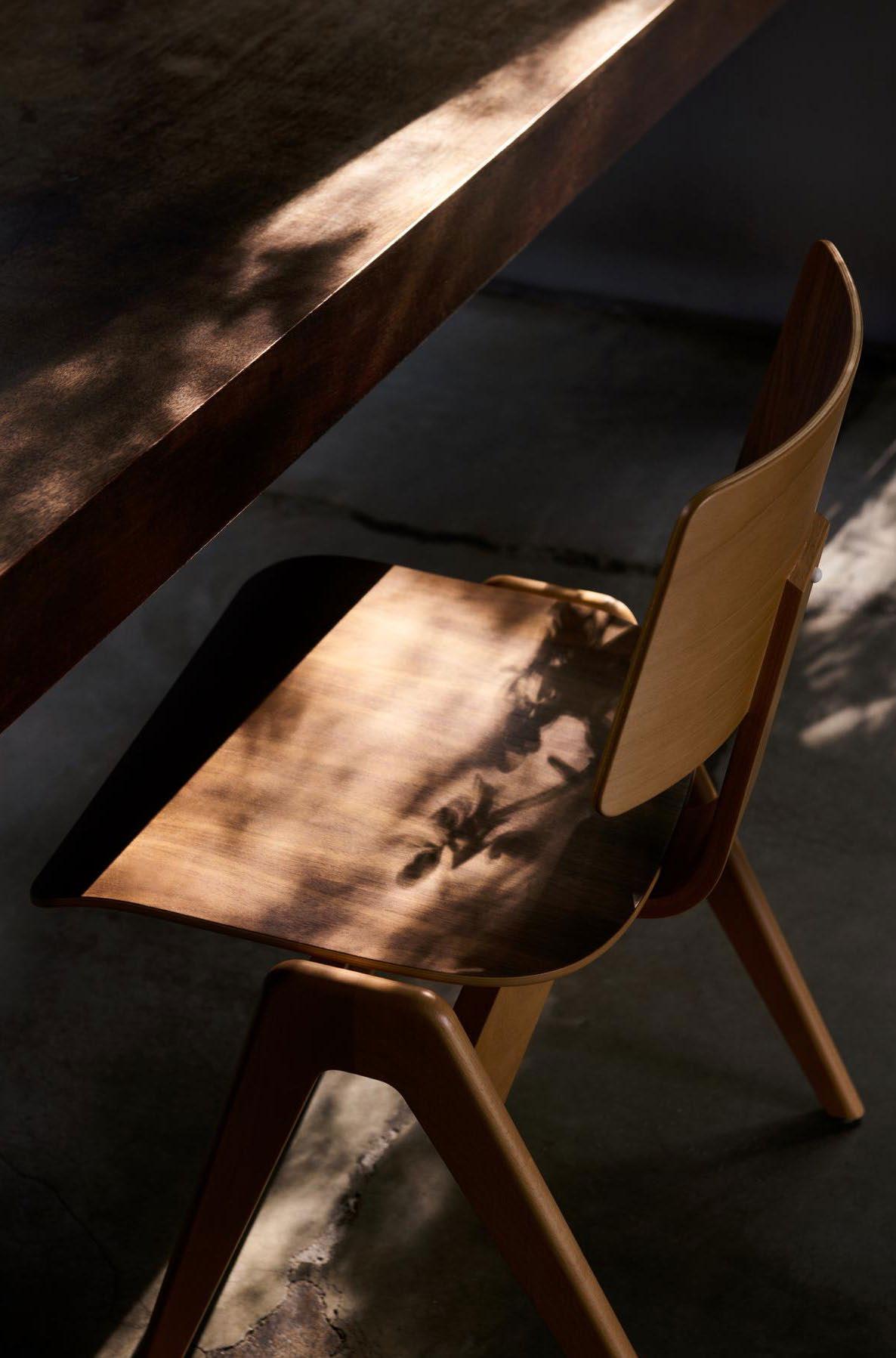


Welcome to our first Impact Report – a place for us to share our past, present, and future initiatives.
Firstly, we call it impact, which is the result of a journey through many versions – from sustainability to responsibility – impact makes sense for us. Impact means the positive or negative effect on someone or something. Because we exist, we have an impact on the world around us, so we should try to ensure that it is a positive one - for the business, but more importantly for the people and the planet.
Our work with impact, education and advocacy is not a stand-alone business entity, but serves as guidance for every employee in every department and for all our external collaborators. We believe it needs to influence both the decisions we make in our daily lives as well as every task we put our hands to.
Our mission is to be in business with the planet and the people at the core, with a passionate approach to masterly design as we work to preserve icons of past whilst creating the classics of tomorrow. Along the way, we consider what we take, how and when we make, and what we waste – it’s a mantra that we apply throughout &Tradition and share across the whole value chain.
Marie Honda CEO
To guide us on this journey, we have set ambitions and goals for both People and the Planet.
Our Ambition for the Planet is to develop and create lasting solutions that further circular practices and minimise our negative environmental impact. To achieve this, we have set goals to work through our design and production ethics, certifications, and smart material choices. Alongside this, after 3 years of calculating our company’s carbon footprint, we are ready to set reduction goals with Science Based Targets for all three main emission categories (Scopes).
Our Ambition for the People drives us to create a healthy, empowering, and inclusive culture for everyone associated
with &Tradition. Our goals include prioritising our employees’ development and wellbeing and improving our supplier due diligence.
It may not always be easy to set our ambitions as a goal or measure them within a KPI. However, we hope our ongoing efforts are evident through our community and the products we bring into the world. We also hope that by being more transparent about this journey, we can lift both ourselves and the community around us to become a company that has a positive impact.
We want to be your preferred partner and a brand that is recognised for making masterly, good-quality designs driven by our ambition to care for people and the planet. We will not be perfect, but with this report, we are taking another step and including our community in this journey.

Kim Ettrup Head of Sustainability and Compliance
Since establishing &Tradition in 2010, our operations have expanded, in turn increasing our impact on the natural environment and the communities adjacent to us. Simultaneously, the growing pressure of concerning climate disruptions and the regulatory needs that follow create an important joint responsibility for the entire design community.
Driven by a commitment to consider the social and environmental implications of our actions, we aim to share both the challenges we encounter and the insights we gain along the way.
At the beginning of our journey, we may not have assigned the term impact to our actions, however, we have engaged with sustainability as a practice since the day we established ourselves as a design company. With over a decade of work behind us, our Impact Report is not only a place to reflect on our achievements, but a way to assess our processes to date – while planning and implementing change for a better future at &Tradition. Now, by working with the term impact, we hope to consider both the positive influences and the negative pressures we exert on the environment and communities we operate in.
In the pages that follow, we will introduce you to our company impact terminology and detail our perspective on considering impact at every step of our operations. We will also present our insights into where the key points of impact in our brand lie, as well as specific milestones we set out to achieve in the near future.
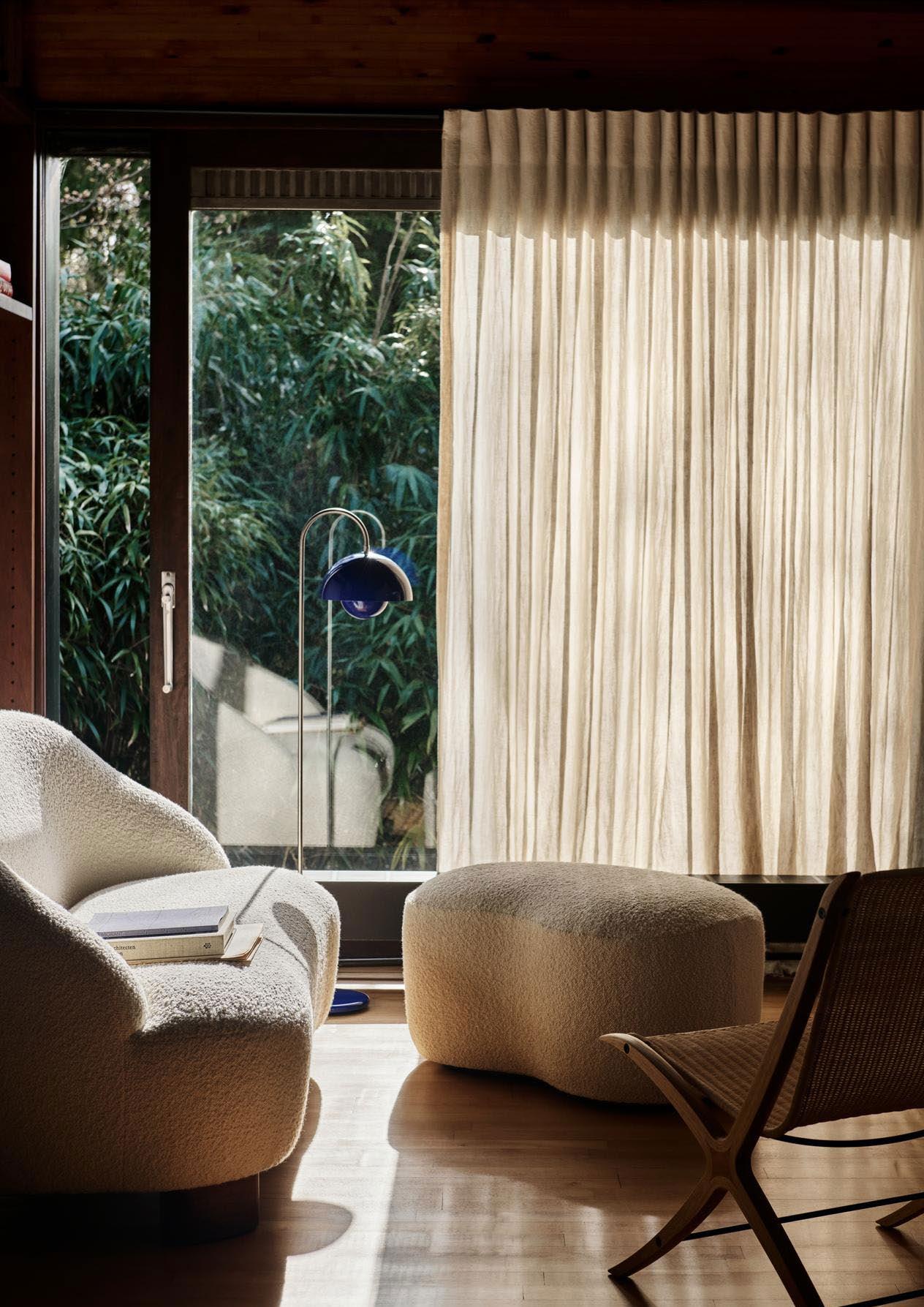
Timeline of our work within Impact
Circular Design
Impact Goal 1: Developing products for circularity
Product Certifications and Standards
Impact Goal 2: Pursuing third-party certifications
Impact Goal 3: Introducing certified lighting products
Materials
Impact Goal 4: Prioritising renewable and recyclable materials
People and Community Impact Goal 5:
Our journey towards responsible material sourcing and circularity in design began years ago, driven by a steadfast commitment to environmental stewardship. Over time, as our understanding has grown, we have structured our efforts, ensuring a systematic approach to lowering our negative impact. This commitment is deeply rooted in our core values, underpinning various projects undertaken by different teams. Below is a detailed timeline of initiatives we have set since the year 2019.
• Commitment for all upholstery foam to be low-emission certified.
• Commitment for all wood and paper-based products to be FSC® certified.
• Commitment to use only water-based lacquer.
• Achieved chain of custody FSC® certification.
• Began a dialogue with supply chain on reducing negative social and environmental impact.
• First version of our Code of Conduct introduced with our European suppliers.
• Began making a switch from PU lacquer to water-based lacquer in several product families.
• Product requirements and chemical policy formalised and implemented.
• In-house sustainability programme launched and ambassadors appointed.
• Formalised sustainability strategy.
• First version of our environmental and social goals, Minimum Requirements set.
• Achieved 100% renewable electricity in the buildings we operate.
• Travel & transportation office policy set.
• Local and Environmental Purchasing office policy set.
• Began collaboration with Målbar to develop verified carbon screenings for selected products.
• First EU Ecolabel certification achieved.
• Packaging guidelines finalised and implemented.
• Design principles put in place and introduced to our designers.
• Carbon emission baseline for &Tradition established, including Scope 1, 2 and 3.
• Achieved FSC® certification on 92% of our wood and paper-based products.
• Code of Conduct improved and resubmitted to suppliers.
• First sofa with removable cover launched in line with circular design principles.
• Achieving FSC® certification on 95% of our wood and paper-based products.
• Created tote bags made from upholstery offcuts in collaboration with Sheworks.
• Charitable donation and employee trip to Nepal with Red Cross.
• Created aprons made from leather deadstock in collaboration with Artikel Copenhagen.
Implementing circular design principles such as designing for disassembly, repair, replacement of parts and renovation prolongs a product’s lifespan as a solution or resource. At the same time, it also allows for responsible material separation and recycling at the end-of-life.
Facilitating this approach through design can decrease the usage of raw materials as well as the energy needed to construct new products, resulting in a more mindful extraction of finite resources and more efficient circulation of materials1-3.
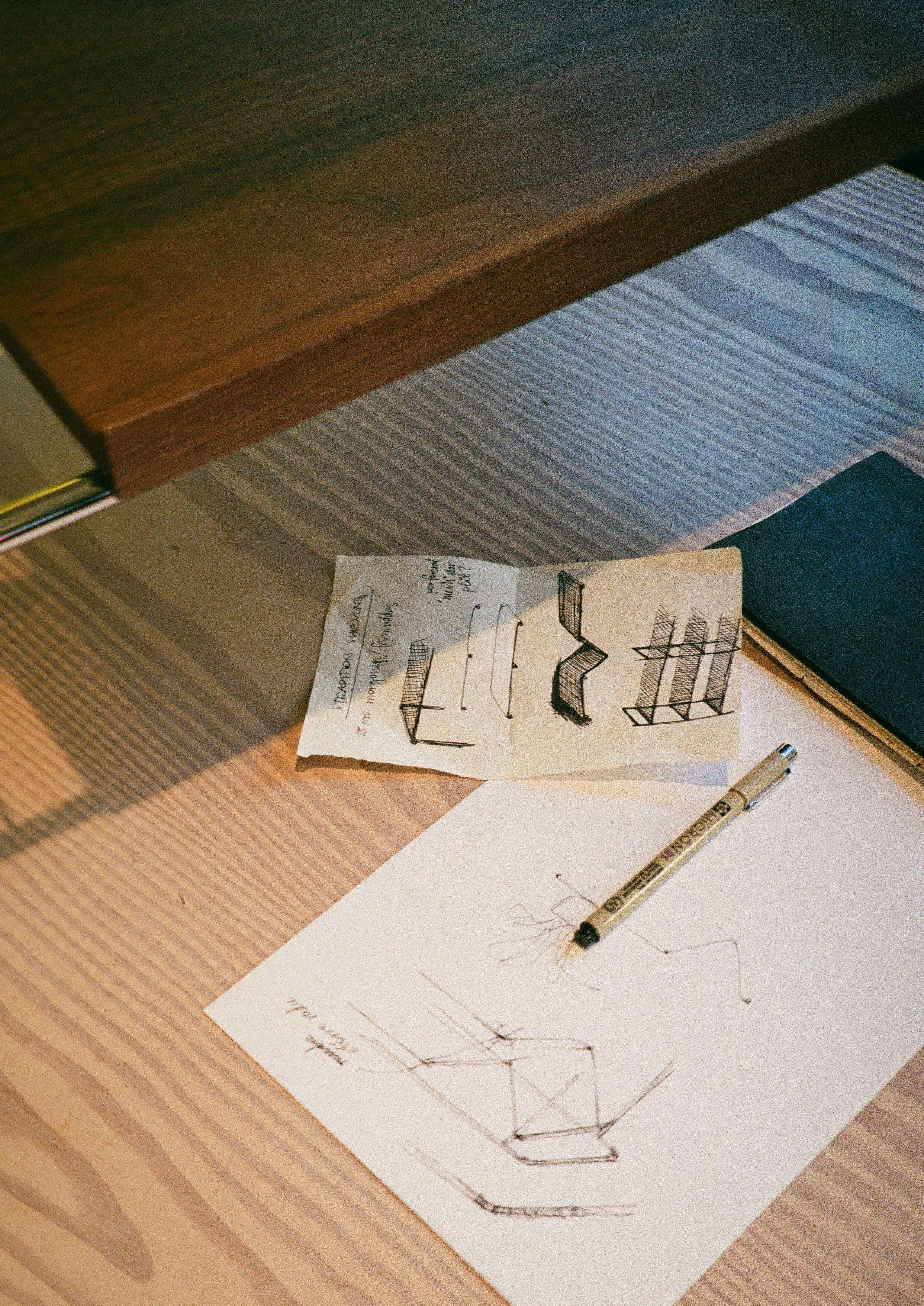
Our designers and product developers use Design & Production Ethics, a guiding framework we developed based on the principles of circular design, as well as the Impact Goals we actively pursue. The considerations cover four areas: Purpose, Materials, Circularity, and Footprint.
MATERIALS
CIRCULARITY
FOOTPRINT
We investigate the intention driving the creation of a design, looking at how it satisfies a need in a different way or serves a new function. We also focus on its relevance over time, striving to build a product that can be used for many years to come.
We consider what combination of materials and finishes will best support the design, looking at increasing longevity and determining to what extent we can use recyclable or renewable elements to form our product.
We position the product within the circular cycle of resources. We also consider how its lifespan can be extended through maintenance, care, refurbishment and repair, as well as responsible recycling at end-of-life.
We map out how we can decrease the negative impact of the product, assessing both its CO2e emissions and waste. In the process, we discuss which solutions can help bring us closer to reductions in these areas.
Our designs are assessed and compared against the Design & Production Ethics principles. Throughout, we consider resources at hand and market access limitations. To the best of our ability, we consider an array of factors in order to lower the impact of our product without losing sight of its optimal function and form.
We also continue to investigate our portfolio and the characteristics of our existing products, assessing their life cycle and considering alternatives that can help bring us closer to the ambitions outlined within Design & Production Ethics.
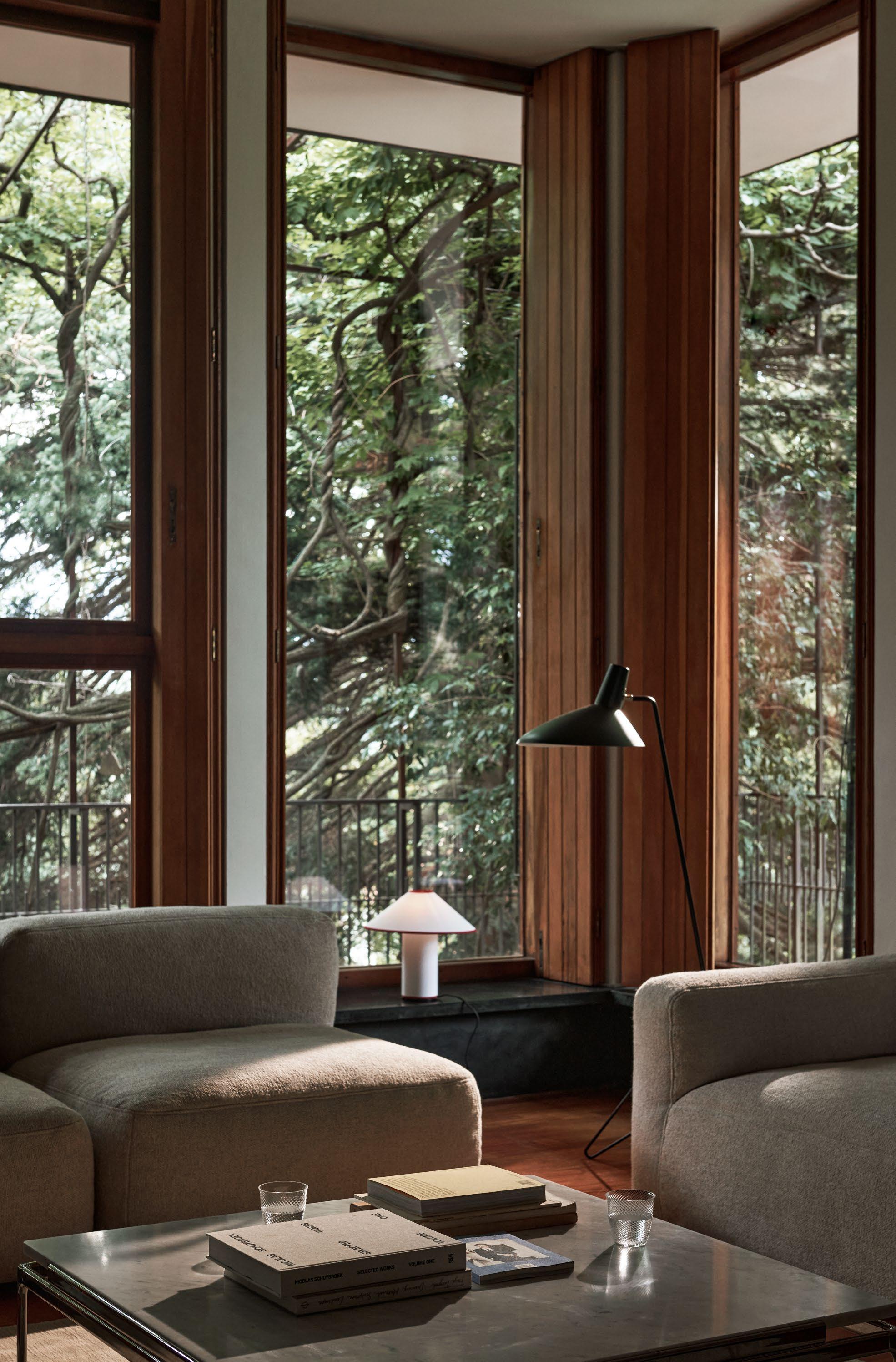
Lighting, furniture and objects | 90% of quantity sold
Starting in 2026, we aim for 90% of the newly launched products we sell to be designed and developed for circularity. A product will qualify if it obtains a third-party certification based on circular principles such as EU Ecolabel, Nordic Swan Ecolabel 4, or Cradle to Cradle.
If a third-party certification is not possible, the product should meet the circular design criteria of the Nordic Swan Ecolabel for furniture and Cradle to Cradle for lighting respectively.
In the process of implementing circular design principles to our upcoming 2026 products, we will gain valuable insights into design challenges we are currently facing. Our aim is to apply what we learn in the process of updating our existing portfolio to also meet circular design criteria.
Working with impact-related certification bodies gives us a framework to guide our initiatives and resources. Partnering with them helps us verify our efforts through assessments, review of documentation and recurring audits.
For our customers and the people we work with, certifications act as an external stamp of approval, providing evidence of our claims. Below, we have detailed the main certifications we chose to commit to alongside a summary of their requirements, our progress, as well as goals.
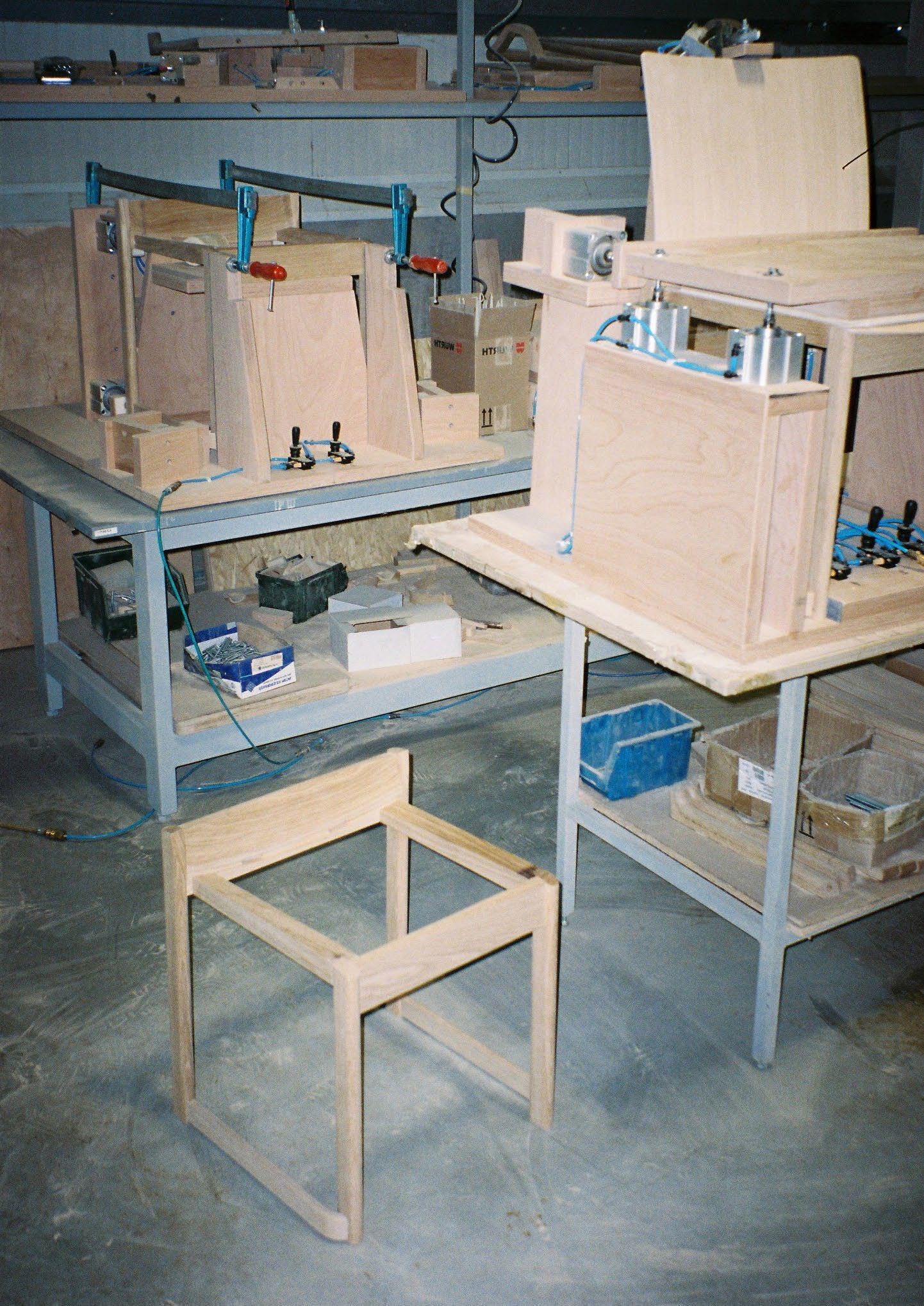
EU ECOLABEL
The EU Ecolabel is an independent third-party verified label established by the European Union. It is awarded to products with an evidenced high quality and environmental performance.
Its criteria are based on scientific data and information considering the entire product life cycle. The EU Ecolabel standards confirm that:
• the materials used in the making of the product are sourced responsibly
• the presence of harmful chemicals is controlled and limited
• the product is designed for disassembly, allowing for repair and replacement of parts and responsible recycling5
The strict requirements of the EU Ecolabel have provided a foundation for our product design principles.
Currently, our Rely, Drip, In Between, Pavilion, Betty, Allwood, Ville, Thorvald and Robin Day product families carry EU Ecolabel certified products, and in 2022/2023, 26% of the furniture we sold was EU Ecolabel certified.
Documentation - all concrete proof that the company should collect and be ready to present when questioned about their claims. It may involve purchase invoices, waybills, certifications, correspondence, in other words, evidence that helps track the company’s actions and confirm the decisions made.
Furniture | 70% of quantity sold
By 2026, we aim for 70% of our furniture to obtain a leading life cycle based third-party certification, defined as either EU Ecolabel, Nordic Swan Label, or an equivalent.
Part of the remaining 30% is reserved for projects that feature renewable and recyclable materials which fall outside of the current scope of the certifications, our work with classic designs protected from significant modification, as well as more challenging projects such as developing upholstered furniture fully designed for disassembly.
LIGHTING
Cradle to Cradle®
Cradle to Cradle® facilitates the designing and making of products that enable a healthy, equitable and sustainable future. It is one of the leading multi-attribute standards used globally across industries by designers, brands and manufacturers. The standard helps innovate and optimise materials and products according to advanced science-based measures.
Cradle to Cradle certified products meet standards within the following categories:
• Material health - ensuring materials are safe for humans and the environment.
• Product circularity - enabling a circular economy through product and process design.
• Clean air and climate protection - generating clean energy and protecting the environment.
• Water and soil stewardship - safeguarding air, water and soil resources.
• Social fairness - embracing safe, fair and equitable labour practices that advance human rights and strong communities6
Lighting only
We are choosing to pursue Cradle to Cradle, a top environmental product certification, on 3 of our lighting products within the Flowerpot family. We aim to finalise this goal in 2026.
Lighting products are an extremely complex category. The industry guidance has so far focused on reducing emissions from the use phase by making the products more energy efficient. While this is still important, our ambitions surpass that.
By pursuing Cradle to Cradle, we commit to the highest standards of material health, product circularity, renewable energy use, water and soil stewardship, and social responsibility. In the process, we are excited to gain insight into crucial points of impact in this product category. This will help us lower impact throughout the value chain, and specifically support us in limiting our Scope 3 carbon emissions.
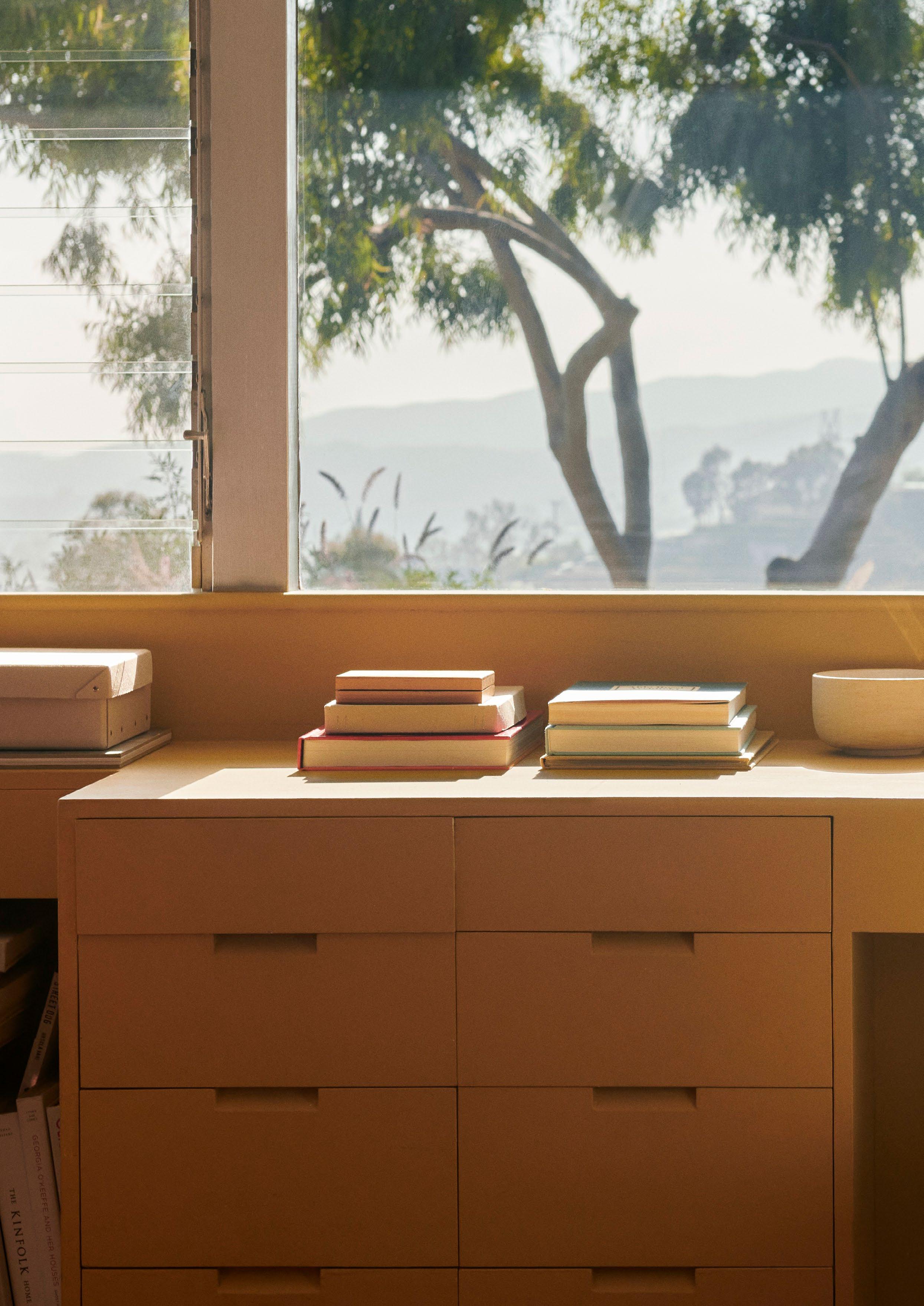
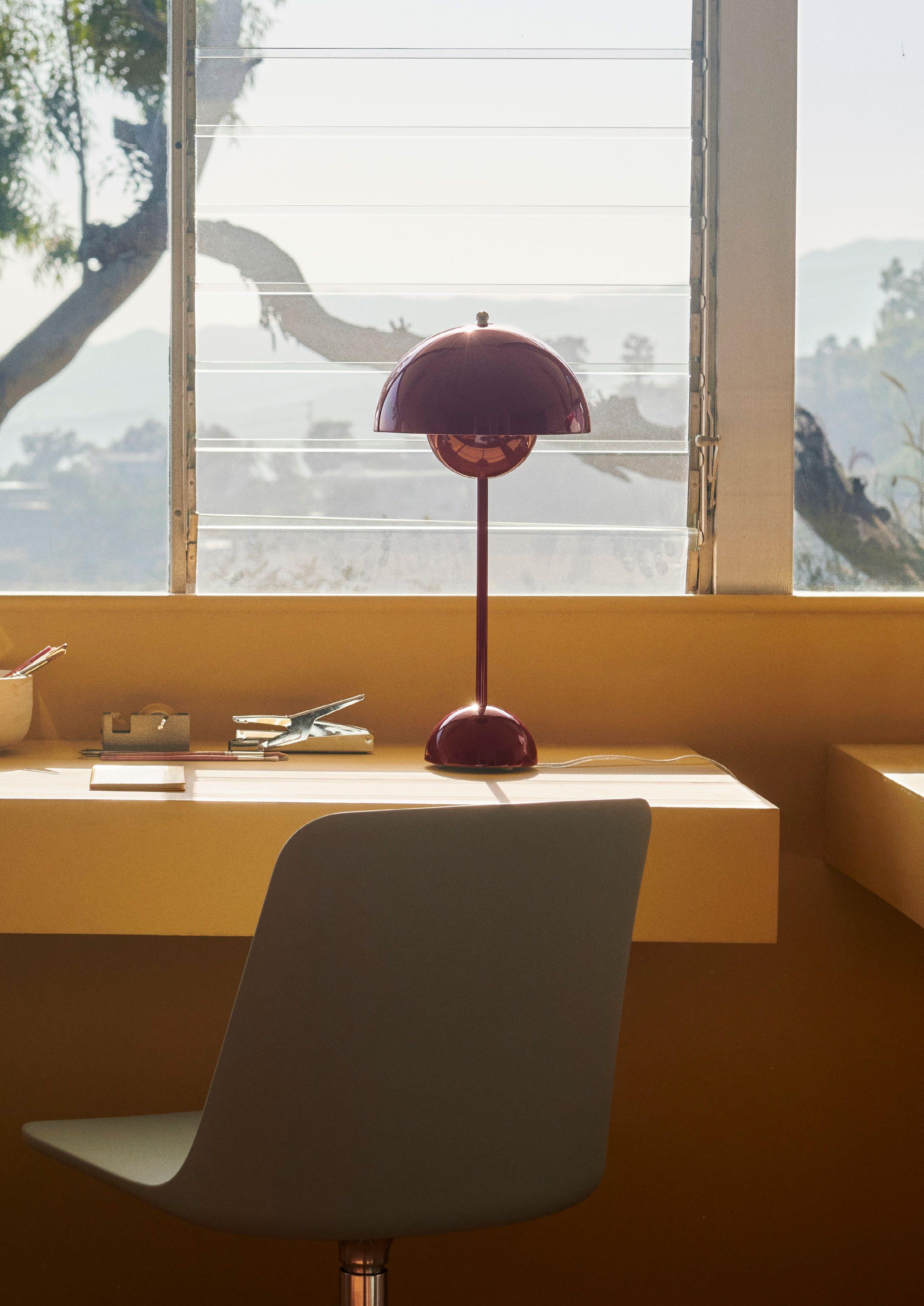
In our collection, we make use of a number of natural and synthetic materials, being sure to stay mindful of their unique properties and best application. Responsible sourcing of materials has strong ties to preserving biodiversity and ensuring the continuous balance of fragile ecosystems. Additionally, specific methods of extracting and processing materials can affect the health of people who come into contact with them.
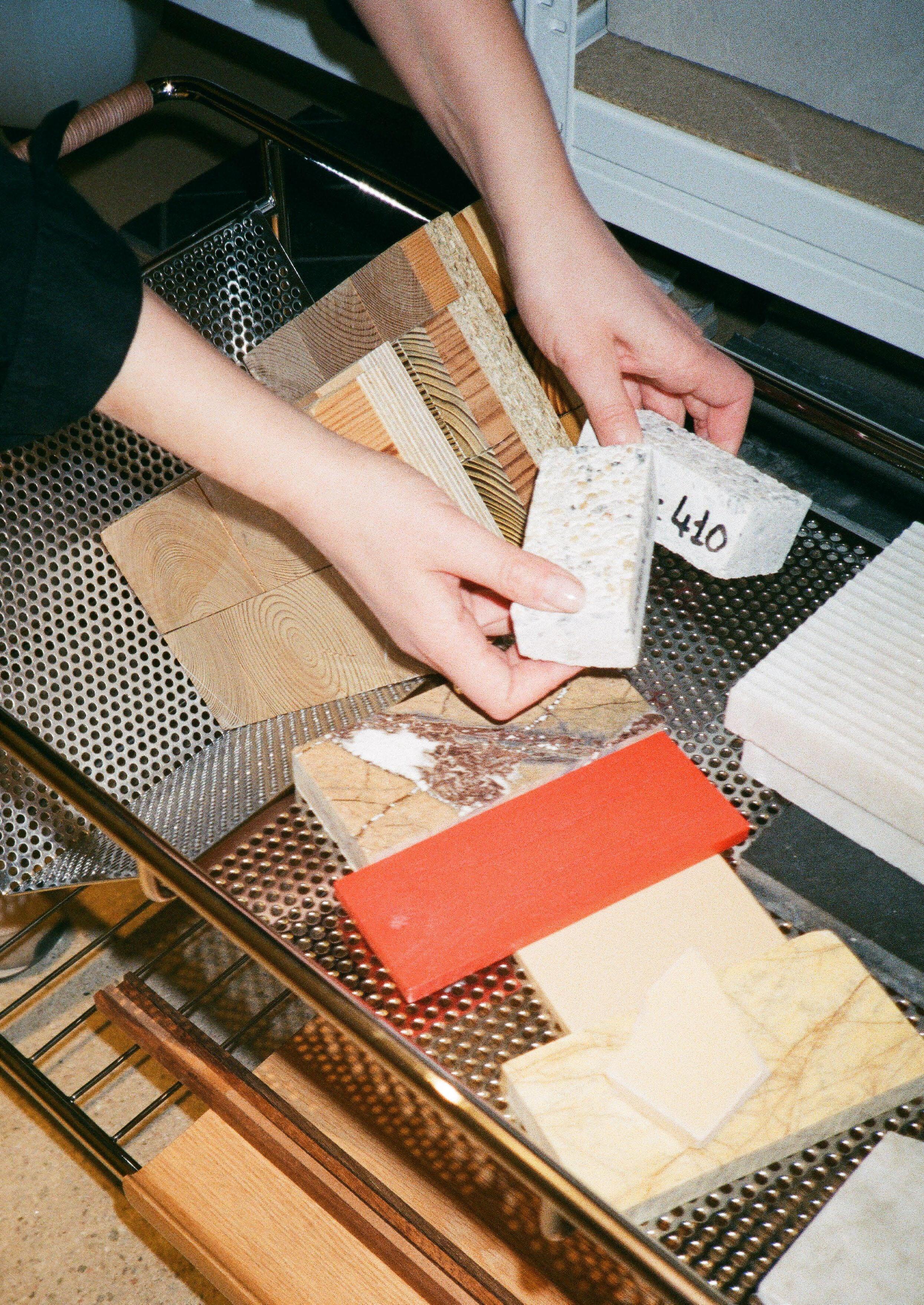
Having adopted the Ellen MacArthur Foundation definition, we consider renewable materials to be ones that are continually replenished at a rate that is equal to or greater than the rate of depletion 7. This means there are methods of replenishing their supply in the circular cycle of resources, such as through regrowing or replanting. Therefore, our sourcing is less likely to deplete the limited amount of resources we must share with future generations.
WOOD AND PAPER-BASED COMPONENTS
One of the most used materials in our collection is wood, with a large portion of our designs using it as their primary material or featuring it as an accent. When incorporating wood into our pieces, we mainly look to using oak, teak, ash, beech and walnut.
Extracting a natural resource from the environment can have a negative impact and must be done mindfully.
We hold a chain of custody FSC® certification. The certification works to ensure that the wood we source is not obtained through deforestation, allowing the forest to regenerate and protecting its function in regulating the earth’s climate.
It also safeguards biodiversity and cares for the wellbeing of workers and forest-dependent communities. Navigate to the FSC® homepage to learn more about the certification8 .
Currently, 95% of the wood and paper-based products we sell are sourced in line with responsible forest management principles set by FSC®.
Having adopted the EU Waste Framework Directive definition, we consider recyclable materials to be resources that can be reprocessed into products, materials, or substances whether for the original or other purposes. This also includes materials that can be organically reprocessed, but does not include materials used for energy recovery, fuel or filing operations. For a material to qualify as recyclable, it must be separable from other recyclable and non-recyclable materials. We opt for mostly using well-known monomaterials which can be processed in widely established recycling streams in most locations, such as metals like steel and aluminium, glass, as well as certain types of plastics. This helps us ensure the highest likelihood of our products being transformed into raw materials again after their disposal 9-10 .
Biodiversity - the variety of species present in natural environments, crucial to the balance and wellbeing of ecosystems. Includes animals, plants, bacteria and fungi11
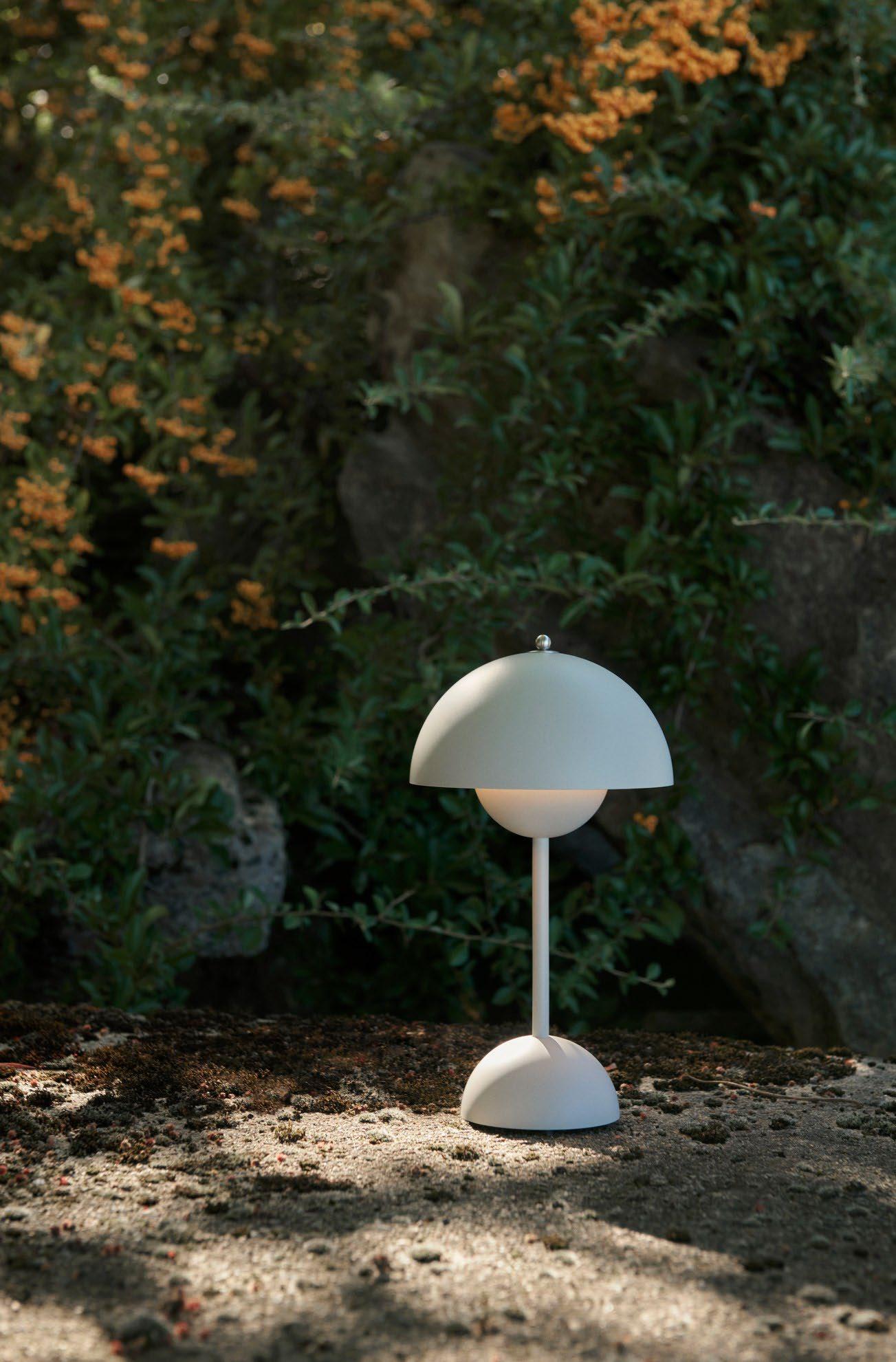
We’ve made significant progress in the way we source our plastics for the Rely chairs. While initially we used recycled plastic granulate made from car interior parts and post-industrial plastic waste, we have successfully switched to sourcing strictly post-consumer recycled plastic. The material we use now comes from discarded white goods, like household washing machines and dishwashers.
In addition, the core units in our portable lights are made with certified recycled plastic, reducing the need to source brand new synthetic (or fossil-based) materials.
Currently, each Rely dining chair repurposes 3.4kg discarded plastic, each armchair – 5.1kg, and barstool – 1.8kg.
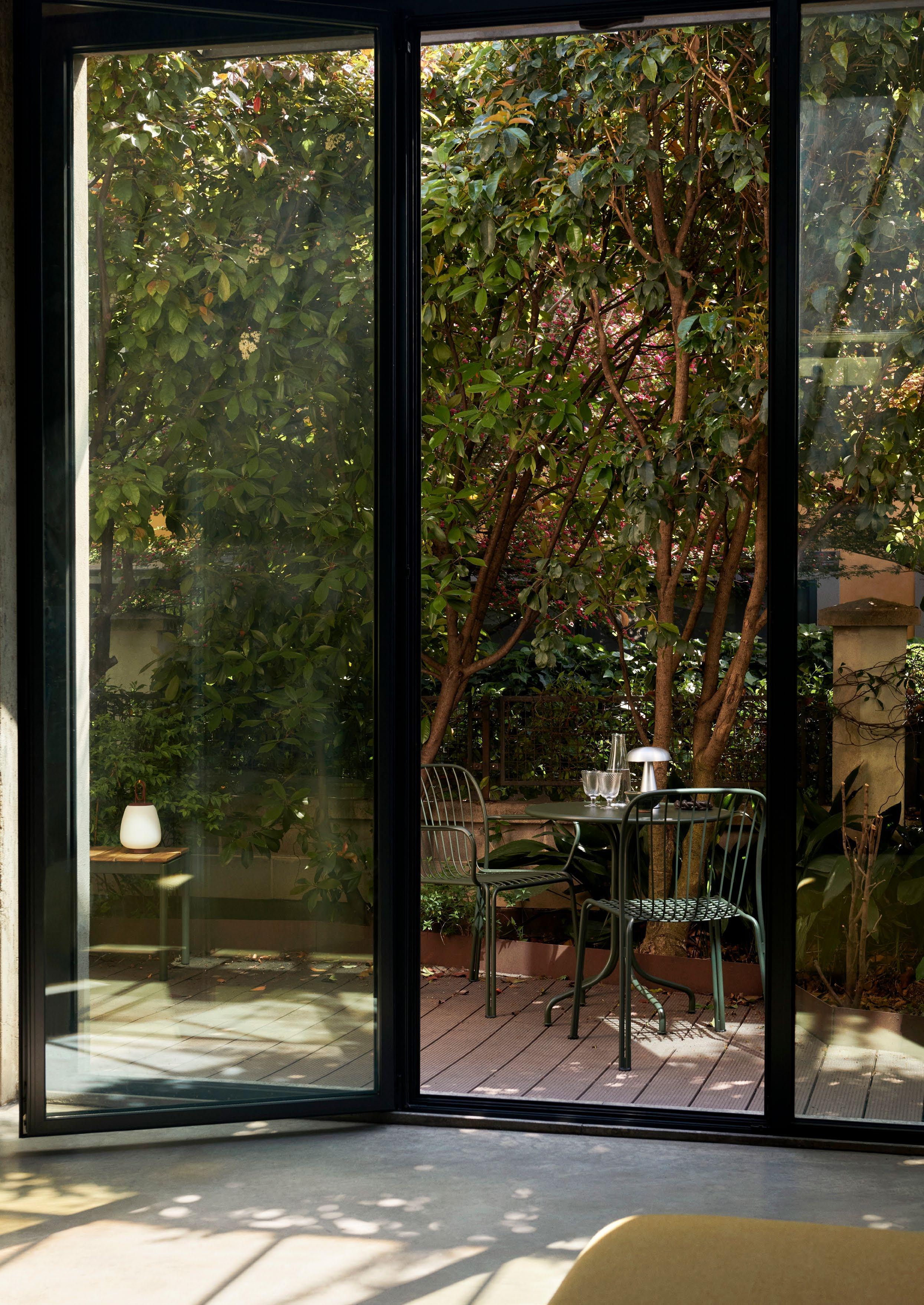
Lighting, furniture and objects | 90% by weight and quantity sold
Starting in 2026, we set an ambitious goal for 90% of materials used in our newly launched products to be either renewable or recyclable.
As we work on developing our upcoming products using mostly renewable and natural materials, we will gather valuable insights.
Our aim is to apply what we learn in the next step of the process, as we update our existing portfolio to also consist of primarily renewable and recyclable materials.
Controlling substances used in production processes is crucial in preventing pollution of water streams, soil, and preserving biodiversity. It also affects the health and wellbeing of factory workers who come into direct contact with the substances used while manufacturing our products. A strict chemical policy keeps the user safe from harmful residues and emissions. On a product level, it protects recycling streams from contamination, allowing more materials to enter another cycle as resources.
All chemicals used in our products are thoroughly evaluated according to the potential physical, health, and environmental hazards present. In 2022, we implemented a broad Restricted Substances List (RSL), which we adhere to during the development phase. We use the Nordic Swan Label as a guiding principle when setting limits and restrictions to the substances allowed in our products. In order to ensure safe indoor air quality, we adhere to strict limits of harmful VOCs .
Volatile Organic Compounds (VOCs) – polluting airborne chemicals which, under normal conditions, can vaporise and enter the atmosphere. Harmful to indoor air quality and subsequently health12.
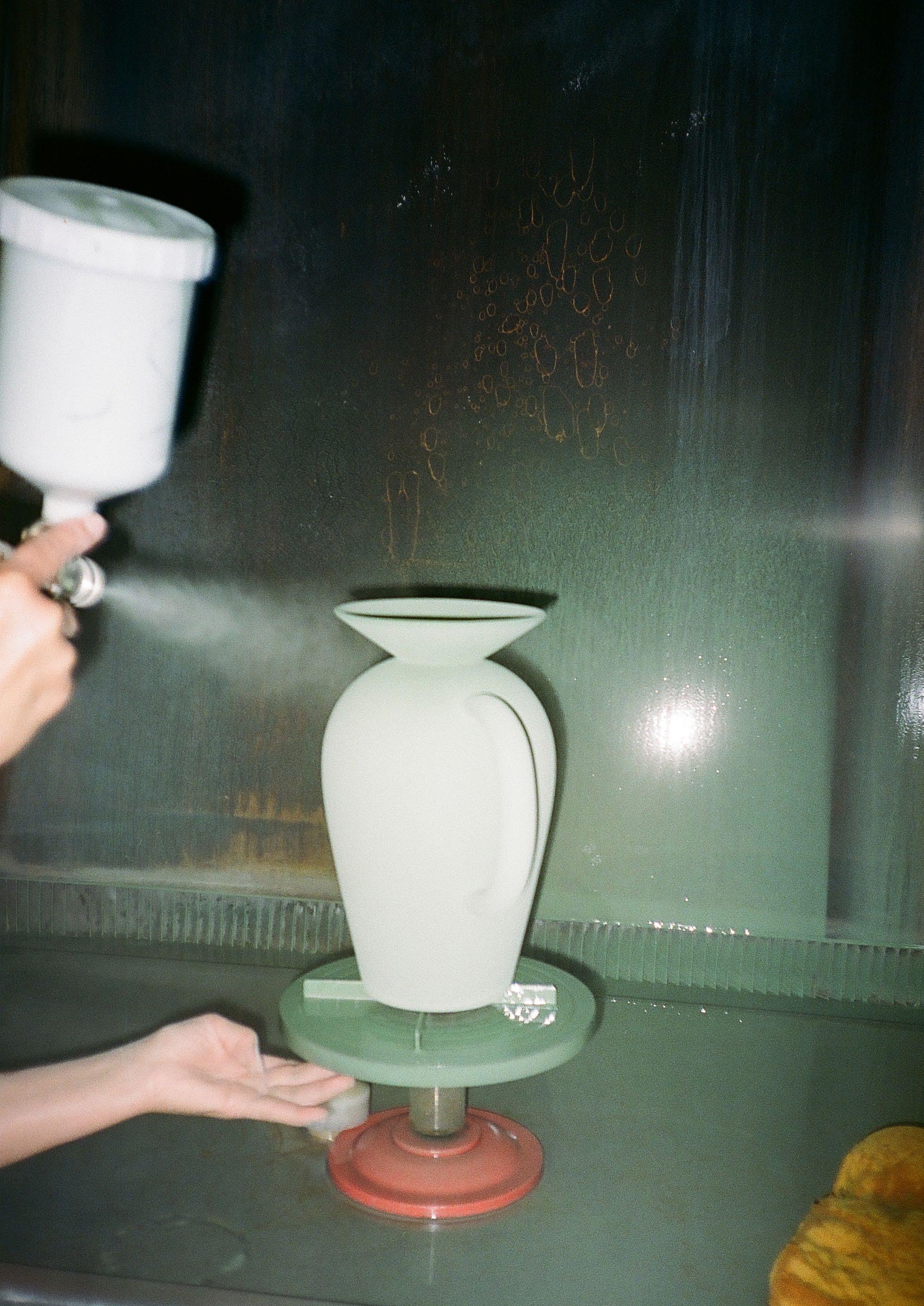
In 2023, we re-evaluated our Upholstery Collection. In the selection process, we chose options accounting for their purpose, quality, material composition, longevity, as well as high performance.
The textiles were chosen from select preferred partners. By reducing the number of textiles available, we were able to build a curated catalogue that could work across our entire collection.
When considering the textiles’ material composition, we needed to strike a fine balance. The main points of impact included strengthening the integrity of the textile to prolong its lifespan - which often requires the use of stronger raw material, while at the same time being mindful of the limited availability of virgin materials and using recycled components to repurpose existing resources. This falls in line with our desire to think about our products, and all their components’ entire life cycle – including their afterlife.
The final selection includes eight EU Ecolabel compliant textiles, made in accordance with leading circularity principles while protecting high workplace standards in cut, make and trim facilities. The upholstery catalogue also includes several other highly durable options, third-party verified guaranteeing low-emission levels and safety from hazardous substances.
Navigate here to browse our Upholstery Collection.
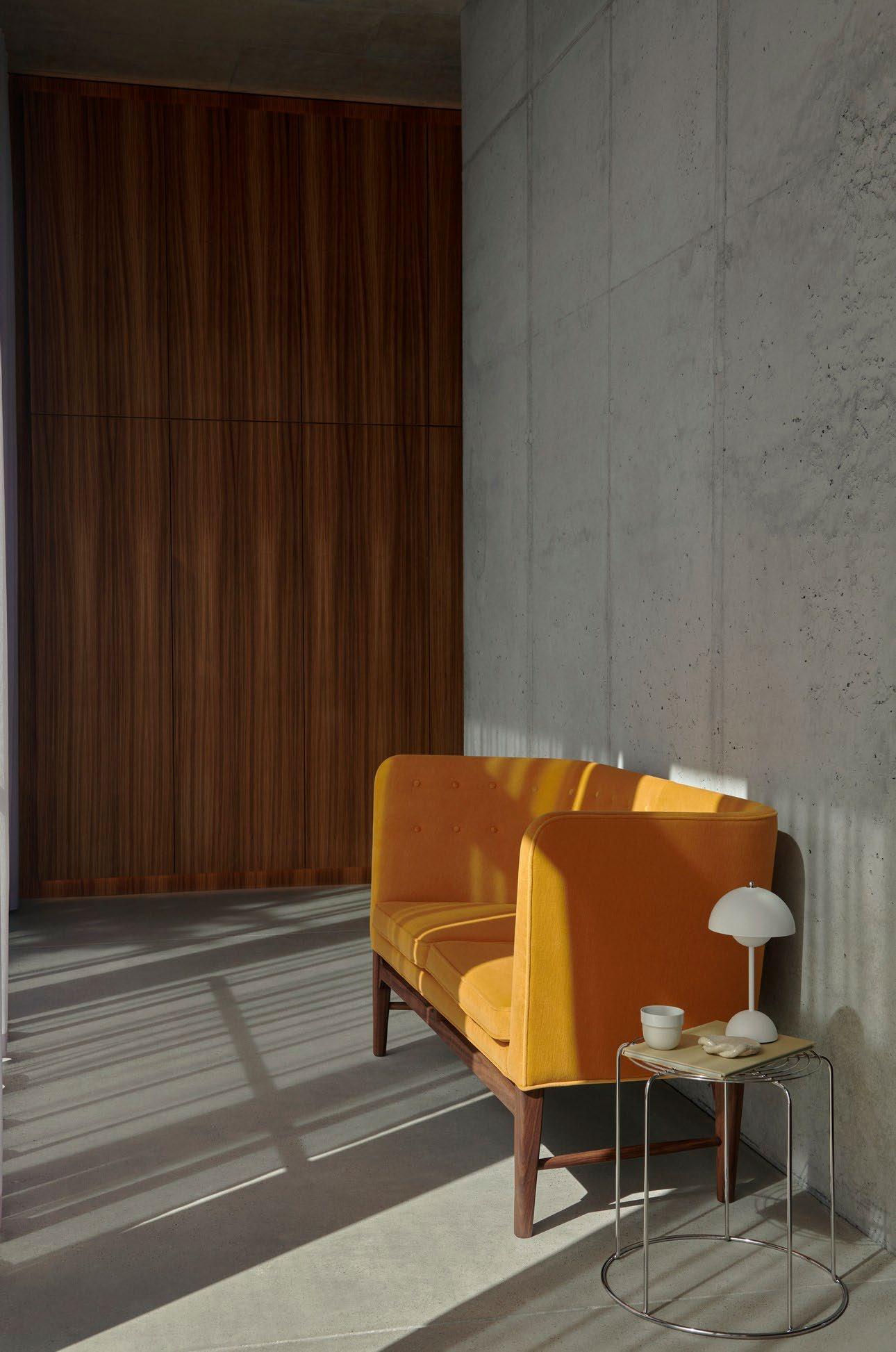
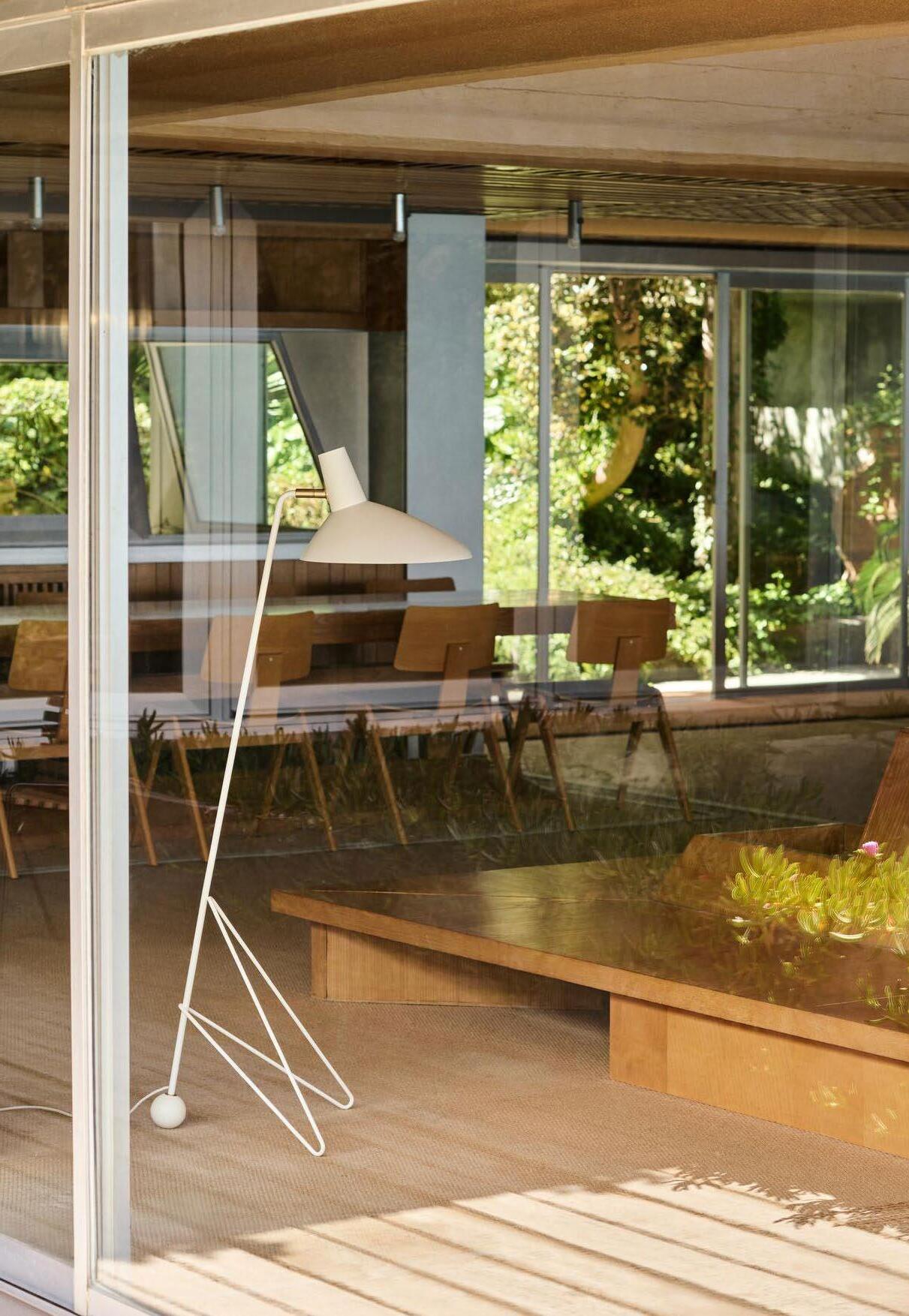
Between 2021 and 2022, we reviewed the packaging for our Tripod, Flowerpot, Copenhagen, and Bellevue product families. We replaced styrofoam in our packaging with lower impact pulp trays made from moulded paper. This initiative aligns with our commitment to the principles of circular design, which extend to the material hierarchy in our packaging design. This switch increased our use of recyclable, naturally sourced padding, significantly reducing our contribution to waste. Additionally, the transition to pulp trays helps lower our carbon emissions by decreasing the production and disposal of styrofoam – a synthetic material with a relatively high environmental impact.
Caring for our community and the natural environment is also integrated in our daily operations as a business, extending to the daily decisions we make and the commitments we adhere to. We endeavour to establish an engaged culture by cultivating a sense of caring for people and the planet at every point, from creating products to connecting with people.
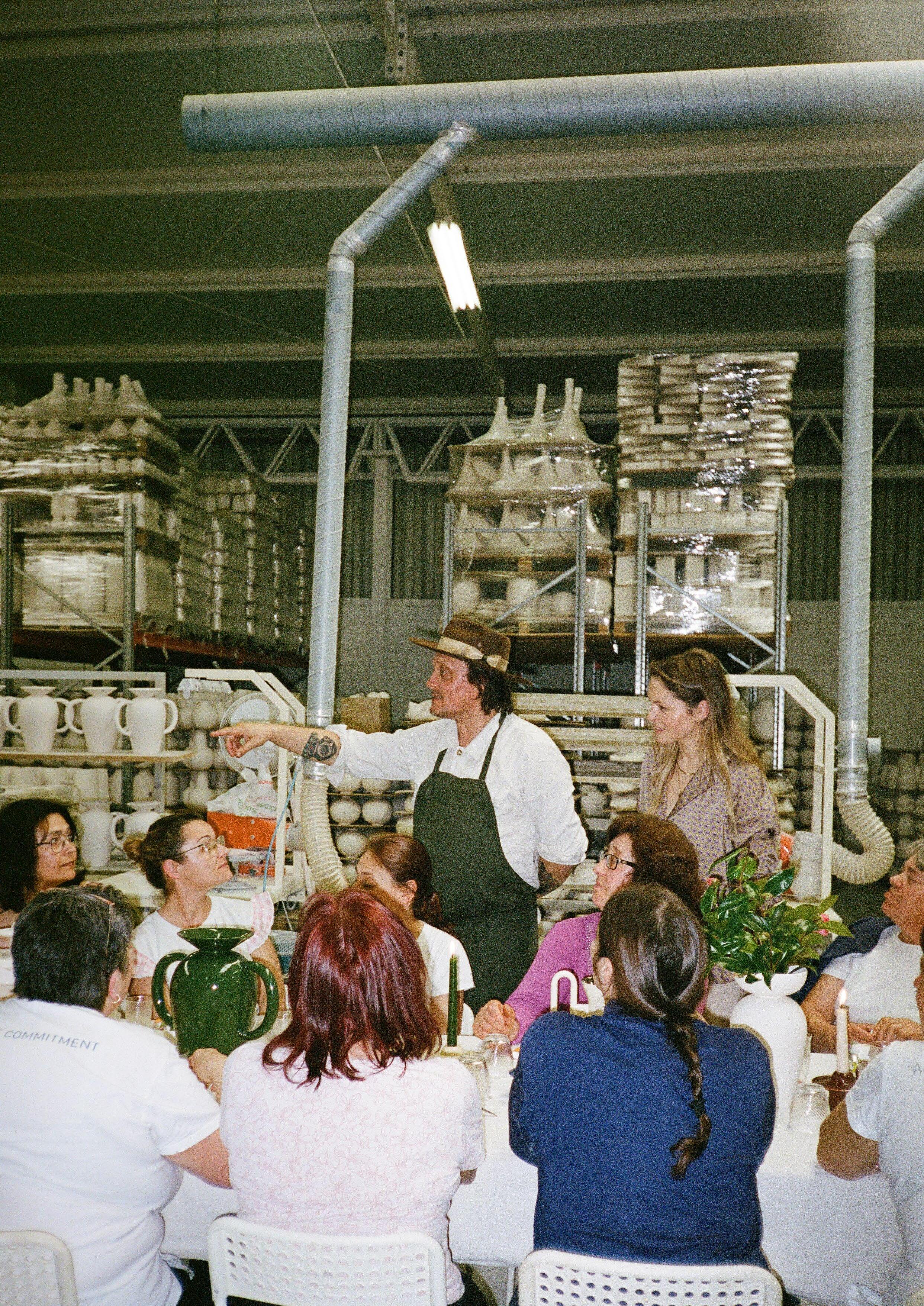
Our Code of Conduct (CoC) serves as a formal agreement between us and our suppliers, outlining high standards of safety and ethics within our supply chain. It imposes a strict ban on child and forced labour, implements rigorous health and safety measures such as access to protective equipment, secures freedom of association and an anti-discrimination policy, and sets standards to proper disciplinary practices, legal amount of working hours, living wages, and fair compensation.
In 2023, we revised our Code of Conduct, drawing from leading industry standards. The updated version has been distributed and implemented with our suppliers.
Our suppliers have also pledged commitment to the standards guaranteed by the CoC. We collaborate with them to achieve ambitious environmental and social goals.
Updated CoC Supplier education and self assessment
Supplier CoC adoption Factory audits
Continuous governance and training
Corrective action plans
Report and risk analysis
Our updated Code of Conduct outlines the ethics and behaviours we expect throughout our supply chain. We educate our suppliers about the CoC and require them to perform a self-assessment to ensure they understand and comply with our standards. After this has been conducted, our suppliers formally adopt the CoC, committing to its principles.
We currently conduct audits at our supplier factories in China, India and Turkey to verify compliance with the CoC. The results of our factory audits are compiled into reports, with which we perform a risk analysis to identify areas of concern. Based on the risk analysis, we develop corrective action plans to address any issues found during the audits. We maintain this cycle through continuous governance and training to ensure ongoing compliance and improvement in adherence to the CoC.
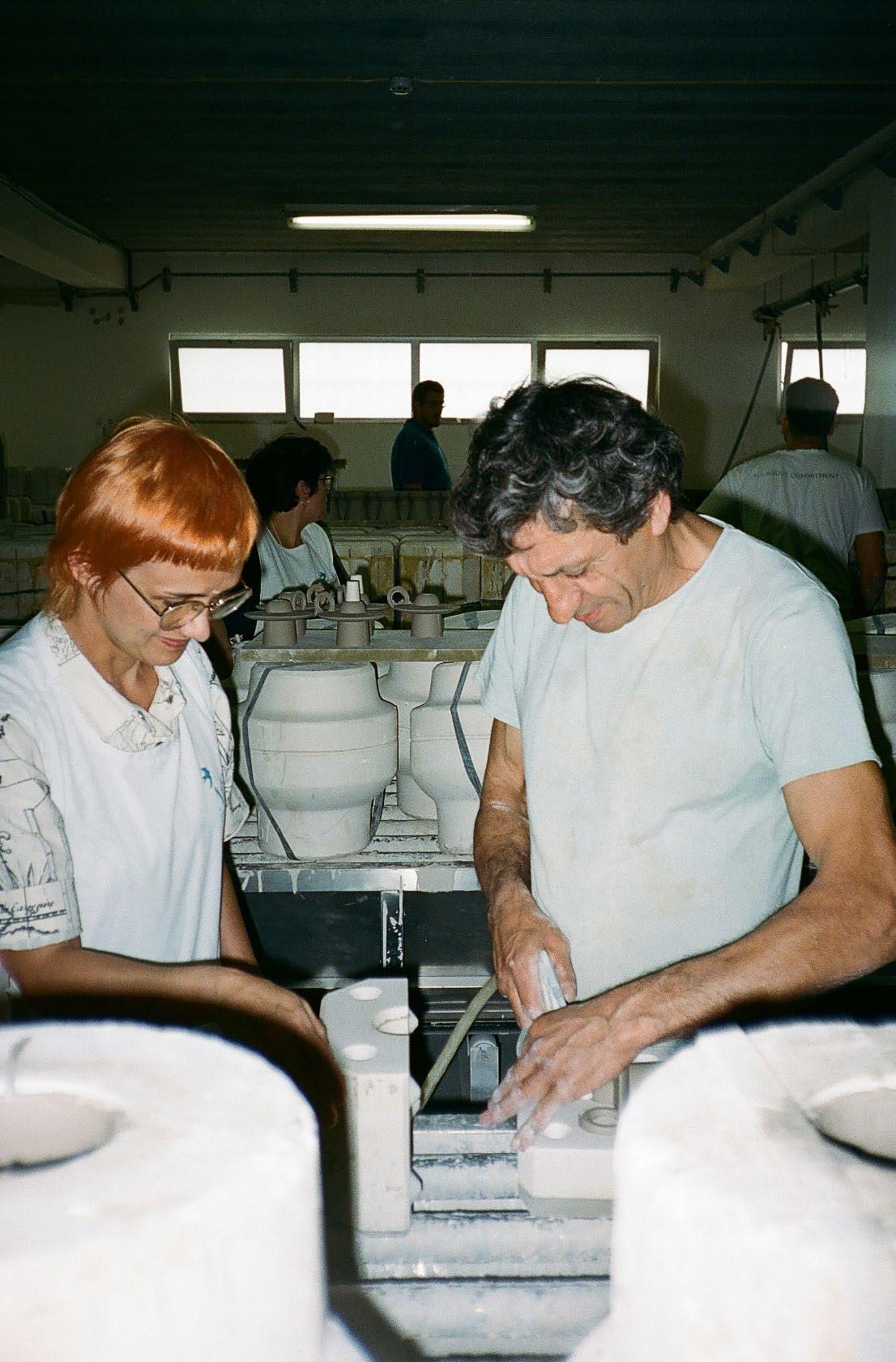
As part of the ongoing dialogue we lead with our suppliers, we strive to build a culture that works towards joint environmental and social goals.
A key long-term ambition is to implement an ongoing auditing process, verifying compliance with our Code of Conduct throughout our supply chain.
As part of this goal, we aim to introduce supplier scorecards, which will help us evaluate our suppliers’ performance according to key measures of product quality, claim rates, as well as environmental and social impact policies.
As of 2024, supplier scorecards and an auditing process have been implemented with our suppliers in China, India and Turkey. We are still working on implementing a similar setup with our European suppliers.
Supplier scorecard – a standardised framework used to evaluate the supplier’s performance within a set of parameters.
Our office on Fredericiagade runs entirely on renewable energy and uses high-efficiency LED light sources. Both the office and product workshop waste is properly sorted and recycled. Lunch is made by an in-house team who prepare primarily vegetarian dishes made from fresh, locally-sourced ingredients. The team follows Local and Environmental Purchasing as well as a Transportation and Travel policies, choosing partners offering lowerimpact product and solutions.
We aim to foster an open-minded culture, encouraging people to take responsibility, grow and become an active part in the brand’s journey – in an environment where diversity can flourish. In 2023 we welcomed a buddy programme, Danish classes and relocation support to help international colleagues settle into life in Denmark. To foster a safe environment and incentivise employee autonomy, we conduct annual mutual performance dialogues with the respective team leads. They help us map out obstacles and goals, create dedicated career plans, as well as being a way for both management and employees to practice self-awareness and feel accountable to our shared values.
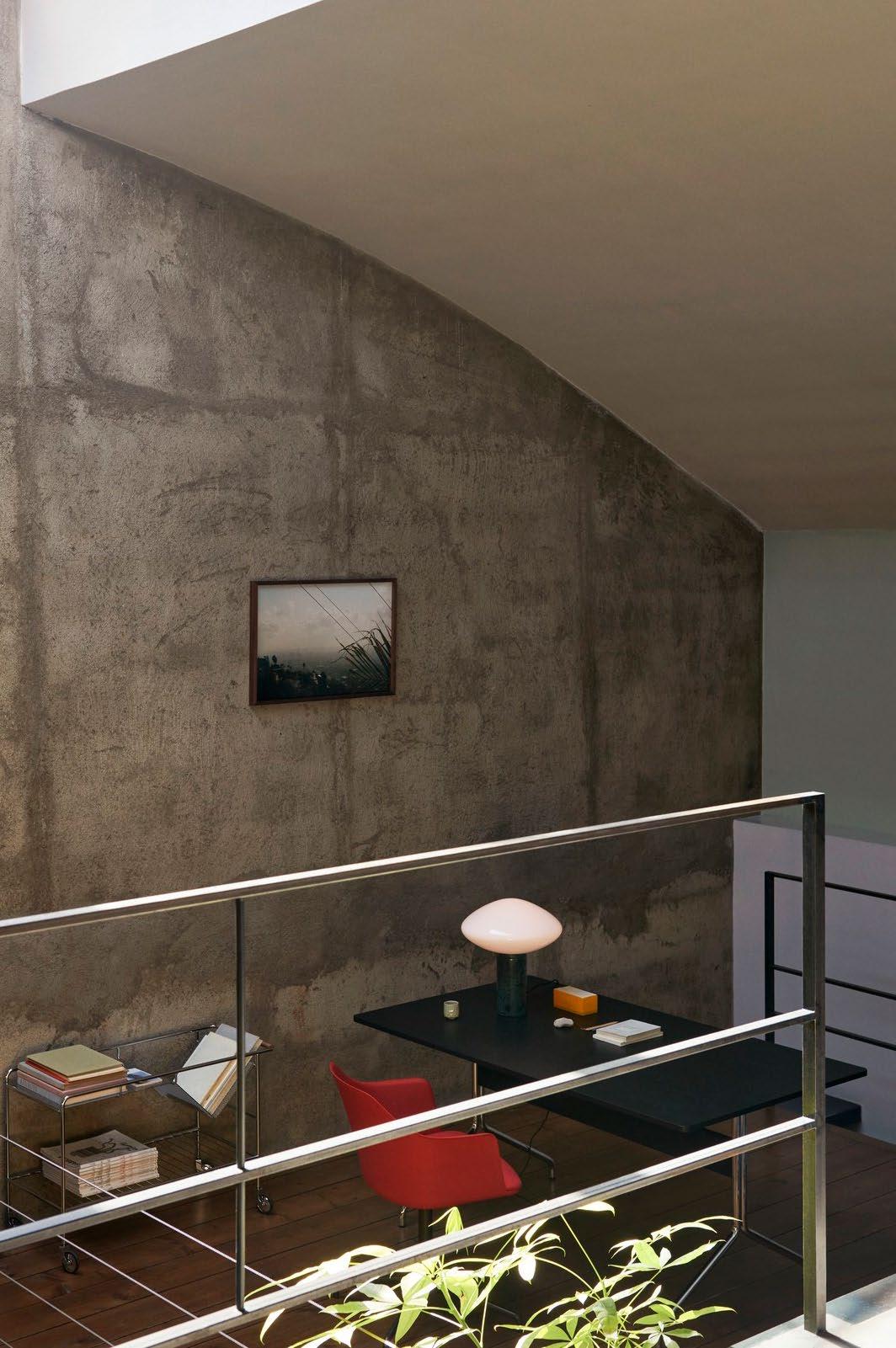
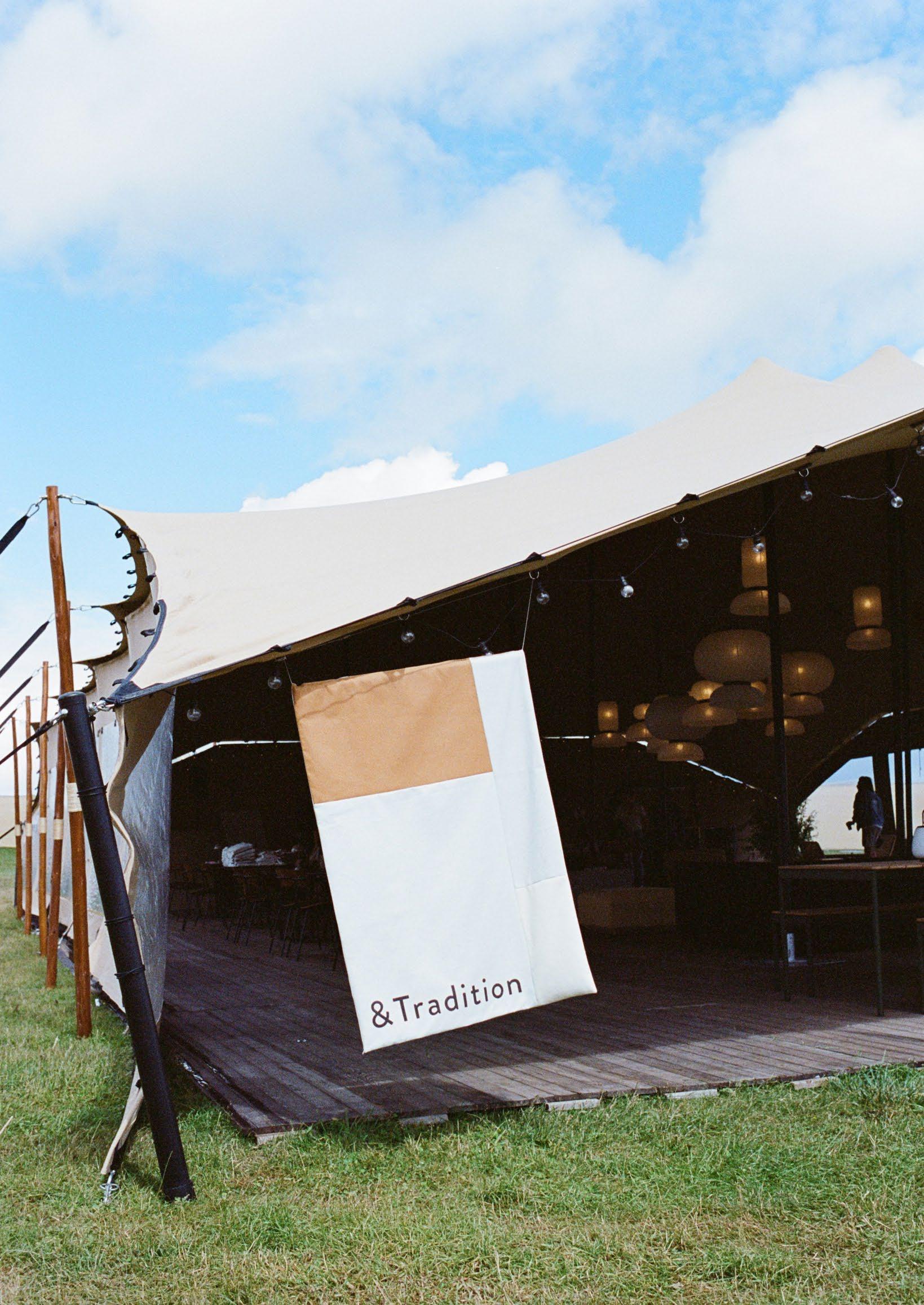
Our Second Cycle programme addresses the surplus of products and materials generated during our furniture development process. This surplus includes prototypes, showroom pieces, designs that didn’t make the grade, and textile offcuts. The initiative aims to prolong, reuse, and redistribute these items through several categories. Products in good condition can be sold at discounted prices, while surplus materials are repurposed in creative projects with local artisans. Additionally, we loan furniture to venues, cultural events, and hospitality settings to extend their use. In a final attempt to lower our impact, where possible, items that do not fit into our predefined categories are dismantled and recycled according to local regulations.
Navigate here to learn more about Second Cycle.
We value human-made detail and quality craftsmanship rooted in tradition, while supporting people and meaningful initiatives. In order to create exemplary designs and memorable experiences, it is vital that we facilitate an environment based on honest communication, where workers and colleagues create and collaborate in a safe space.
In early 2024 we introduced our colleagues to a formal Internal Code of Ethics outlining the standards of moral and ethical behaviour we commit to as members of the brand, protecting safety and fair treatment within the team. Among other things, it touches upon bribery, preferential treatment, inclusivity and protection of vulnerable groups. Failure to comply with these standards carries the risk of losing employment as well as being held accountable legally. For safe help in serious matters, all colleagues also have access to an anonymous whistleblower programme.
As a people-centric company, we continuously work to put community at the forefront of our efforts. Our commitment to people is reflected in our creative collaborations, where we look for initiatives that allow us to reuse elements and products to give them a new life as well as a positive social purpose.
We look to work with charities and engage with not-for-profit organisations who we feel represent us as a company and share a similar set of values. We continuously support the Danish Red Cross, and since 2020, we’ve been supporting Joannahuset, a safe house for vulnerable youth. Additionally, we continuously donate a share of our profits to the Nine United Fond, supporting NGOs and organisations in addressing humanitarian causes, research, as well as nature preservation.
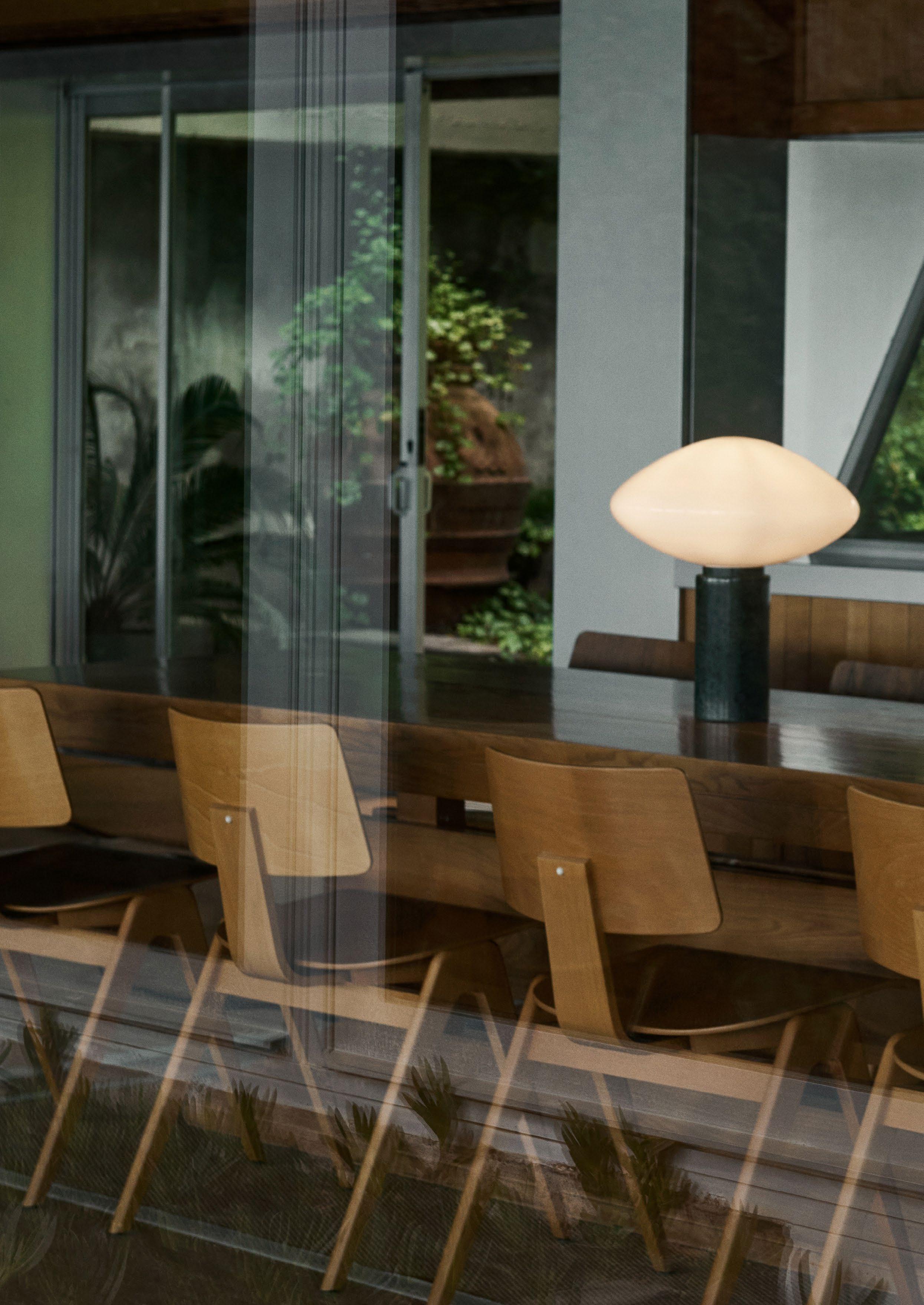
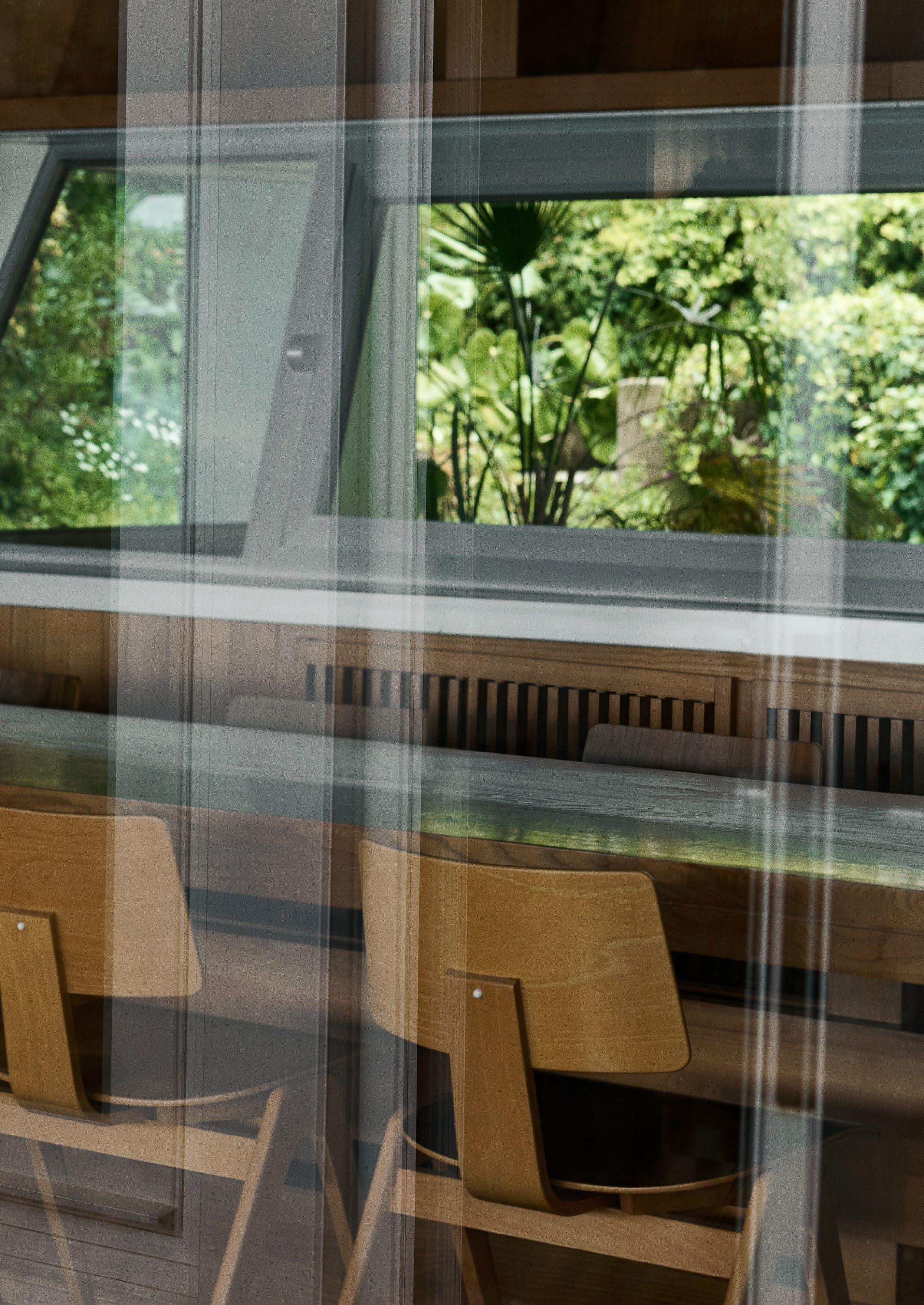
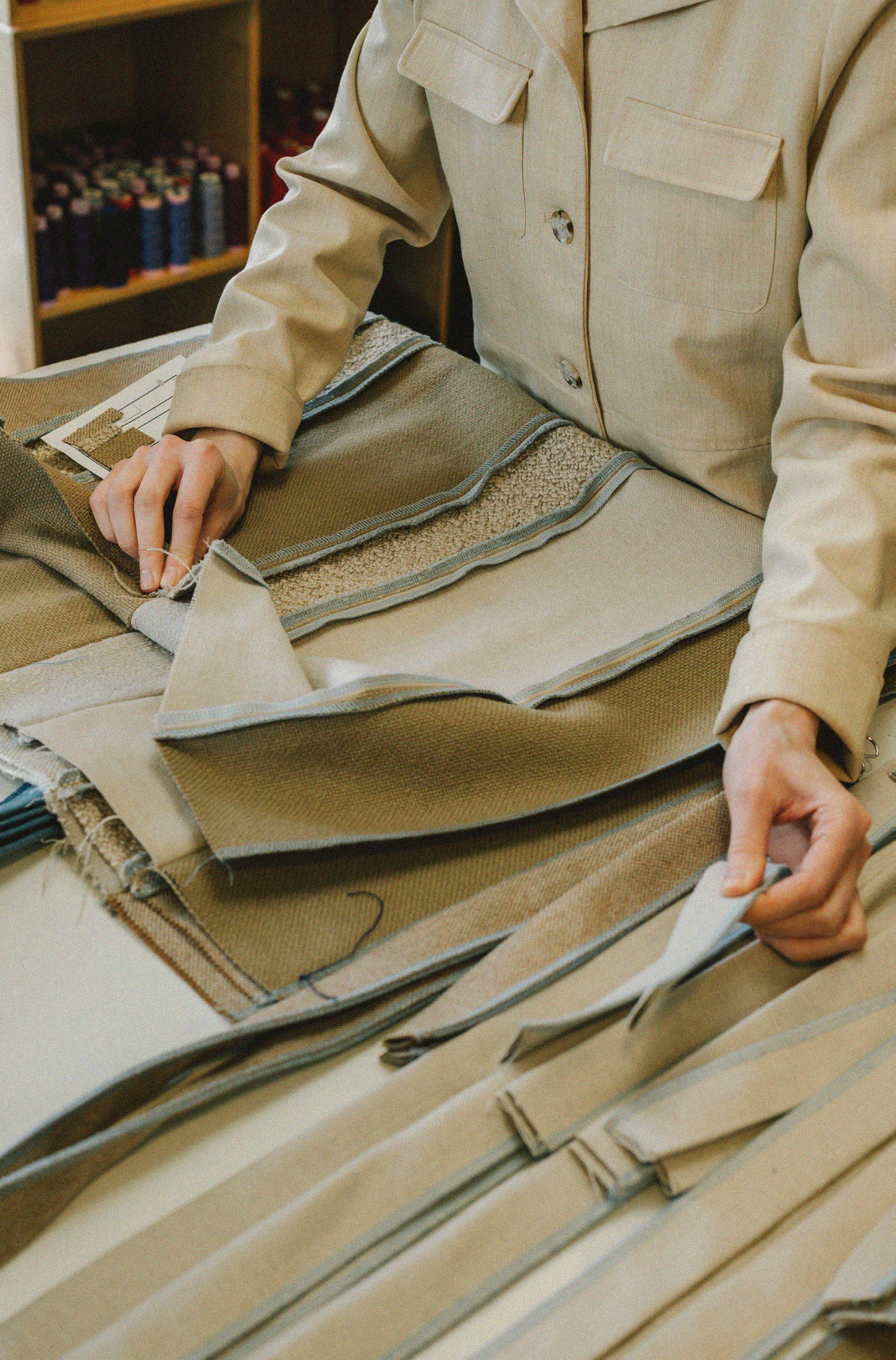
During 3daysofdesign 2023, we unveiled a tote bag made as part of the &Tradition x Sheworks collaboration. Each bag repurposed approximately 510g, or 1m2, of surplus fabric from various &Tradition production processes. Working with women on the outskirts of the Danish labour market, the studio supports vulnerable people, empowering them with purpose and community, a place where they can find a caring and supportive network.
Navigate to the Sheworks Atelier website to learn more about their projects.
We perform carbon footprint calculations to evaluate our activities through a common unit. As a result, we can see to what extent they contribute to climate change. This helps us gain a deeper understanding of where the bulk of our impact lies and how we can reduce it.

In 2022 we achieved our goal of measuring our carbon footprint including scopes 1, 2 and 3 according to the Greenhouse Gas Protocol .
Since then, our carbon footprint from 20/21 has been established as our baseline year and we have been measuring our CO2e emissions every year.
In order to improve the accuracy of our baseline and to be able to set proper reduction targets, we focused on maximising the amount of activity-based data.
Activity-based data presents a robust, more accurate representation of the emissions, as it is based on actual quantities consumed.
ACTIVITYBASED DATA examples include:
• Distance driven in company cars, in kilometres
• Distance travelled for business, in kilometres
• Heating and electricity used in our buildings
• Emissions associated with our products calculated based on European Union’s Product Environmental Footprint (PEF) methodology
To make the data collection more efficient, a more systematic approach has been implemented and we have partnered with Normative.io to take advantage of their expertise, tools and their emissions factor database. Wherever activity-based data was not available, we used spend-based data which relies on the financial value of transactions.
Greenhouse gasses – gasses released into the atmosphere as a result of production processes, mainly using fossil fuels and altering the way we use land. They trap heat, disturbing the earth’s natural ability to regulate temperature, and thus, contributing to global warming.
Greenhouse Gas Protocol – a comprehensive global standardised framework to measure and manage greenhouse gas emissions from private and public sector operations. It categorizes emissions into three Scopes depending on their origin13.
2022 / 2023 Total CO2e emissions: 51.58k tCO2e
Scope 1 less than 0.1%
Direct emissions from buildings and/or vehicles owned or operated by &Tradition.
Includes &Tradition employee car fleet.
Scope 2 less than 0.1%
Indirect emissions from the energy we purchase, i.e. electricity, heat, and natural gas in the buildings we use.
Includes energy used at the &Tradition Copenhagen office, main showroom and the Little Petra Café, warehouse and store in Aarhus.
Scope 3 over 99%
Value chain emissions. Manufacturing of our products, as well as other main operations.
The manufacturing of &Tradition products, as well as all goods and serviced used for running our day-to-day business, i.e. activations and events.
Use and end-of-life treatment of &Tradition sold products.
Upstream transportation and distribution from &Tradition suppliers to warehouse.
Employee travel and accommodation.
Employee commuting to the workplace, Fuel and EnergyRelated Activities, Investments and Waste generated in operations.
Scope 1
Company cars
Scope 2
Owned energy
Our aim is to decrease the emissions associated with our company cars by making a gradual switch to an electric fleet.
All buildings under our operational control run on certified renewable electricity. In the future, we aim to engage in power purchase agreements or similar, which would allow us to add more renewable energy to the grid in the countries that we operate in.
Scope 1 & 2:
Reduce emissions by 42% by 2030, calculating basing on the 20/21 baseline year.
Scope 3
Business travels
Production
Use phaselighting products
In order to choose solutions that help us minimise our impact, we implemented a travel policy guiding our team members on best practices.
We are actively working with our Tier 1 suppliers to increase the amount of renewable energy used to produce our products. Currently we are at 40%, and our goal is to get to 70% by 2026.
Our team continuously works to make lighting products more energy efficient. To help our customers make the most responsible decisions, we suggest the optimal light source with every light product.
By 2026, at least 70% of our products must come from suppliers that use renewable energy.
Reduce emissions in line with Science Based Targets (SBTi).
The vast majority of our emissions lie in Scope 3, concentrated mainly in the impact of the products we sell and their use. It is the most complex category, as it considers the full product life cycle, therefore, the calculation involves increasing traceability along our entire value chain.
Mapping out our carbon emissions has helped us identify our biggest impact and consequently, highlighted the areas in which we need to improve to reduce our emissions.
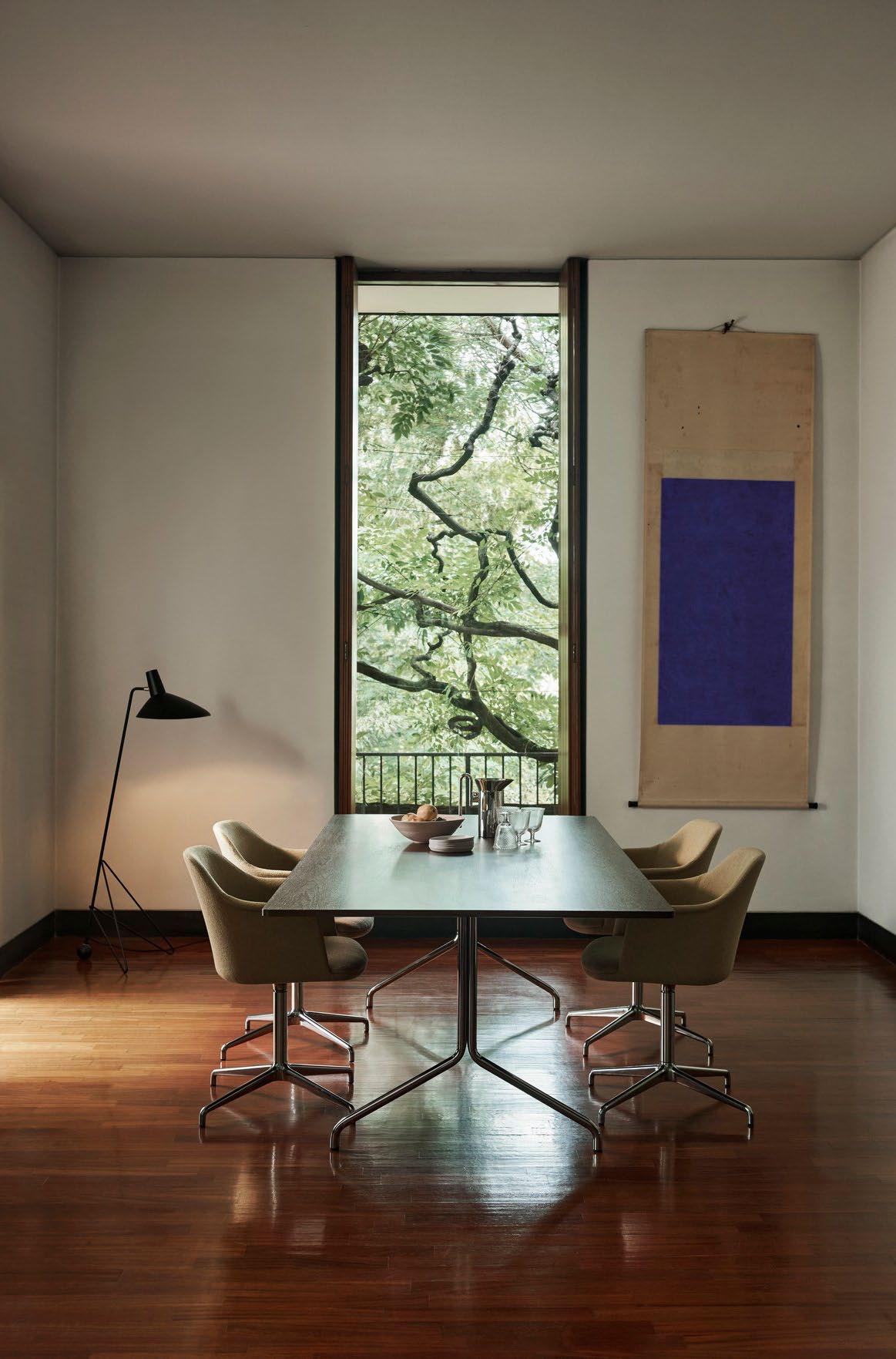
Our ambition is to reduce Scope 1, Scope 2 and Scope 3 carbon emissions. Our next step is to set specific and measurable carbon reduction targets in line with the Science Based Targets (SBTi)14.
Science Based Targets provide companies with guidance and standards on setting reduction targets to carbon emissions according to relevant climate-specific scientific sources.
Their work is part of a movement to keep global heating below catastrophic levels and reach Net Zero by 2050 at the latest.
The company is a partnership between the Carbon Disclosure Project (CDP), the United Nations Global Compact (UNGC), World Resources Institute (WRI) and the World Wide Fund for Nature (WWF). Navigate to the Science Based Targets homepage to learn more.
SBTi provides quality help to set clearly defined goals to reduce emissions. By committing to Science Based Targets, we’ll be joining numerous companies worldwide advocating for the joint goal of Net Zero. We have entered a commitment to complete the process by the end of 2024.
To calculate our emissions on a product level, we have worked with our suppliers to collect and analyse data on how our products are sourced, manufactured, and transported. In collaboration with Målbar, a carbon footprint calculation tool, we were able to examine the lifetime carbon emissions of most of the products within our collection.
The tool follows the European Commission’s LCA methodology called PEF (Product Environmental Footprint), which analyses the product’s full life, from inception to disposal.
In our case, we can identify the use phase of light products as a crucial point of impact, and we work on limiting the energy consumed while using our products through optimising the design and recommending the most suitable light source.
The database available in the tool allows us to conduct simulations and assess the amount of CO2e per product that could potentially be saved by, for example, selecting a different production method or choosing an alternative material.
By sharing insights on the CO2e emissions associated with our products, we can help our customers gain a better understanding of the circular view of the product life cycle and the emissions associated with each stage. The calculation also increases our traceability , as every additional piece of information about the material composition and origin helps our calculations become more accurate. This knowledge supports our design and development teams in making informed decisions that are in line with our impact goals.
Traceability – the ability to make information (for example on product specifications, chemical inputs, materials used, and production practices) available across the full supply chain (including users), allowing common understanding, accessibility, comparability, and clarity. Increasing traceability helps increase transparency15.
Life cycle assessment (LCA) – a way of mapping out the environmental impact of a product, from cradle to grave - the period of time from when a product is released for use after manufacture to the moment it becomes obsolete beyond recovery at product level16.
Emissions associated with the Allwood chair are lower due to its all-wood construction. The FSC® certified oak used is both lightweight and durable, making it long-lasting. Emissions associated with sourcing and processing wood stand at 2,43 kilos of CO2e, constituting less than 10% of the chair’s total emissions. The chair is not upholstered and does not use foam or textile, further limiting its impact.
Thorvald’s solid steel construction increases this chair’s CO2e emissions to four times that of Allwood. This robust metal is best for durable outdoor products but requires considerable energy to produce and form into shape. However, steel is highly recyclable, with recycling streams available in most locations. In the final calculation, the potential to repurpose the raw material in another production cycle is represented by a negative 14,35 kilos CO2e in the disposal category.
Surface
Materials
1. Ellen MacArthur Foundation - Circular Design Guide - https://www.ellenmacarthurfoundation. org/circular-design-guide/overview
2. Ellen MacArthur Foundation - Circular economy introduction - https://www.ellenmacarthurfoundation.org/topics/circular-economy-introduction/overview
3. European Parliament - https://www.europarl.europa.eu/topics/en/article/20151201STO05603/circular-economy-definition-importance-and-benefits
4. Nordic Swan Ecolabel - https://www.nordic-swan-ecolabel.org
5. EU Ecolabel Official Homepage - https://www.eublomsten.dk
6. Cradle to Cradle Certified® - https://c2ccertified.org
7. Ellen MacArthur Foundation - The Circular Economy Glossary - https://www.ellenmacarthurfoundation.org/topics/circular-economy-introduction/glossary
8. Forest Stewardship Council® - https://fsc.dk/dk-da
9. Official Journal of the European Union EUR-Lex - https://eur-lex.europa.eu/legal-content/ EN/TXT/PDF/?uri=CELEX:02008L0098-20180705
10. European Commission EU Science Hub - https://joint-research-centre.ec.europa.eu/scientific-activities-z/less-waste-more-value/definition-recycling_en
11. United Nations Blog - https://www.un.org/sustainabledevelopment/blog/2023/08/explainer-what-is-biodiversity
12. European Environmental Agency Glossary - https://www.eea.europa.eu/help/glossary/eea-glossary/volatile-organic-compound-voc
13. GHG Protocol Standards Guidance - https://ghgprotocol.org/standards-guidance
14. Science Based Targets Initiative - https://sciencebasedtargets.org
15. Ellen MacArthur Foundation - Blog - https://www.ellenmacarthurfoundation.org/articles/building-resilience
16. European Environmental Agency Glossary - https://www.eea.europa.eu/help/glossary/eea-glossary/life-cycle-assessment
Kronprinsessegade 4
DK-1306 Copenhagen
Impact Report &Tradition